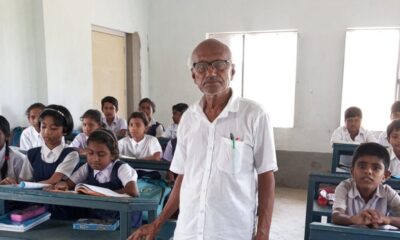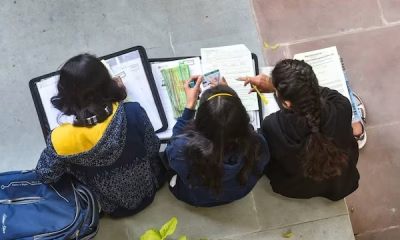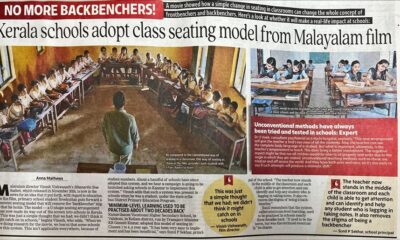Opinion
Early Childhood Care & Education – Quality Standards as a tool to promote equitable quality
Dr Kamini Prakash Rege believes in the need for Quality Standards as a tool to promote equitable quality ensuring optimum developmental opportunities for children
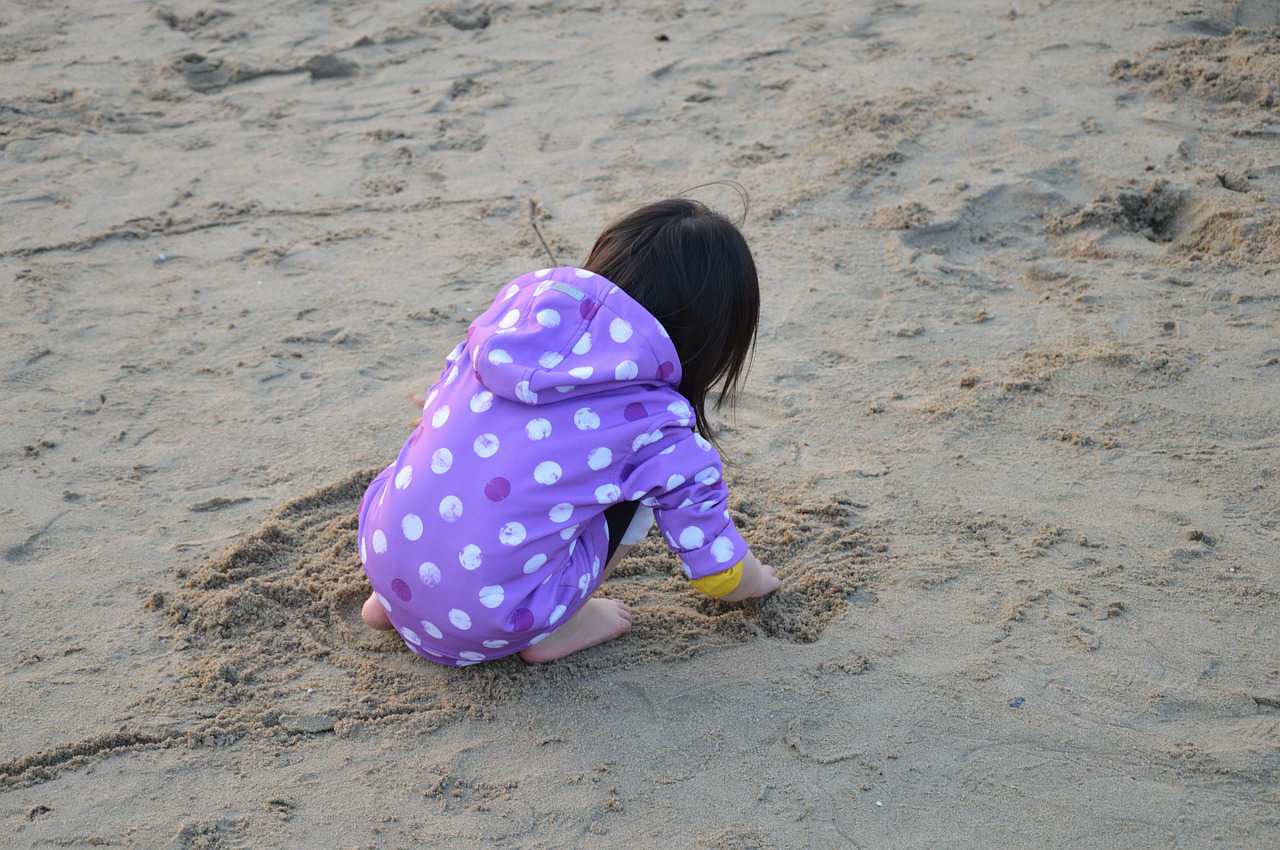
Acceptable Standards
At present, in India, as in many other countries, there is a great diversity in the nature of programmes available for ECCE. The number of players in the field is increasing; this multiplicity of service providers has led to diverse models of ECCE entering the field, bringing with them a multitude of philosophies of childhood and education, often without examining the cultural and contextual relevance of the models. However, there is no certain qualification for an individual to enter the field of ECCE, and there have hardly been any attempts made to lay down some guidelines to ensure that the ECCE services offered are of the right quality and serve the best interests of the young child. At times, many of these ECCE provisions are detrimental rather than being beneficial to the young child. Therefore, it follows as a logical corollary to set some acceptable standards for ECCE in order to ensure improved quality across all the programmes and provisions available to the young children across the country.
Professional Development
In India, the role and functioning of the nature of programmes available for ECCE are changing and so is what is expected of teachers. Teachers are asked to teach in increasingly multicultural classrooms; to place greater emphasis on integrating students with special learning needs in their classrooms; to make more effective use of information and communication technologies for teaching; to engage more in planning within evaluative and accountability frameworks, and to do more to involve parents in schools.
No matter how good pre-service training for teachers is, it cannot be expected to prepare teachers for all the challenges they will face throughout their careers. Education systems, therefore, seek to provide teachers with opportunities for in-service professional development in order to maintain a high standard of teaching and to retain a high-quality teacher workforce.
Effective professional development is on-going, includes training, practice, and feedback, and provides adequate time and follow-up support. Successful programmes involve teachers in learning activities that are similar to ones they will use with their students and encourage the development of teachers’ learning communities. There is growing interest in developing schools as learning organisations, and in ways, for teachers to share their expertise and experience more systematically.
The development of teachers beyond their initial training can serve a number of objectives including:
- to update individuals’ knowledge skills, attitudes and approaches towards the new teaching techniques and objectives, new circumstances and new educational research and recent advances in the area;
- to enable individuals to apply changes made to curricula or other aspects of teaching practice;
- to enable schools to develop and apply new strategies concerning the curriculum and other aspects of teaching practice;
- to exchange information and expertise among teachers and others, e.g. academics, industrialists; and
- to help weaker teachers become more effective.
Ensuring Quality
The approach of Quality Standards is informed by the principle that quality is a multifaceted concept and its enhancement should be seen as a dynamic and a continuous process and not an end in itself, wherein organisations move towards optimum by adopting a cumulative approach towards quality improvement. This would lead to continuous improvement in the services offered by centres in a manner that meets the needs of the young child. It is a tool to promote equitable quality. A graded approach is being adopted wherein the essential criteria will be laid down in a graded and weighted form.
The purpose of the Quality Framework is to provide directives for areas known to be important for ensuring the optimum developmental opportunities for children. It also involves developing appropriate support mechanisms to ensure that quality is achieved and maintained.
Standards and norms are crucial:
- To promote professionalism in the field
- To promote, reinforce and safeguard quality services for all young children
- For the systematic development of this field
Services and programmes for the children in the age group of 0 – 8 years have to be developed keeping in mind the developmental abilities i.e. developmental domains, milestones and needs of the child.
Pedagogies used in ECCE programmes should emphasize the holistic development of the young child, also keeping in mind the needs of special children. Both care and education are important, and the linkages between them need to be explored and drawn on. Interlinkages across domains should also be addressed as the domains of development are not exclusive to each other.
The pedagogy should reflect the learning of the child in his/her context. Transactions should be based on an understanding of the context of the child and the social background of the family.
It is important to recognize the family as the first context where learning and development for all children take place. The family and parents are of paramount importance in the delivery of ECCE programmes and services. A harmonious relationship with positive linkages to the family and parents ensures that the best interests of the child are kept in mind for optimum development.
The child is an active agent in learning, and this has to be encouraged and facilitated in order to allow him/her to develop his/her full potential. The child should be free to make choices, explore and experiment, for which the child should be provided with such opportunities in the surroundings. The voices of the children, along with the voice of the special children, need to be listened to, in order to ensure that their interests are being met by the practitioners, researchers, teachers, professionals and various stakeholders.
Quality ECCE programmes should value and respect diversity of all kinds – cultural, linguistic, caste, gender, class, disability etc. Quality programmes should promote a sense of belonging among children from the varied Indian cultural heritage whether from high socio-economic strata or from low economic strata, abled group or disabled group. Programmes should embrace diversity by introducing a variety of rich and varied experiences, thus allowing children to value and respect diversity.
Protecting Children
We teach our young children all sorts of ways to keep themselves safe. We teach them to watch the hot stove, we teach them to look both ways before they cross the street, but more often than not – body safety is not taught until much older – until sometimes…it is too late. Talk to your children. It is never too soon. It doesn’t have to be a scary conversation. Don’t wait another day. Start these conversations today. Here are the 10 most important areas to cover:
- Talk about body parts early: Name body parts and talk about them early – very early. Use proper names for body parts – or at least teach your child what the actual words are for their body parts. I can’t tell you how many young children I have worked with who have called their vagina their “bottom” and other various names. If a child needs to make a disclosure of abuse – this can make their story confusing.
- Teach them that body parts are private: Tell your child that their private parts are called private because their private parts are not for everyone to see. Explain that mommy and daddy can see them naked, but people outside of the home should only see them with their clothes on. Explain how their doctor can see them without their clothes because mommy and daddy are there with them and the doctor is checking their body.
- Teach your child body boundaries: Tell your child matter-of-factly that no one should touch their private parts and that no one should ask them to touch somebody else’s private parts. Parents will often forget the second part of this sentence. Sexual abuse often begins with the perpetrator asking the child to touch them or someone else.
- Tell your child that body secrets are not okay: Most perpetrators will tell the child to keep the abuse a secret. This can be done in a friendly way such as, “I love playing with you, but if you tell anyone else what we played they won’t let me come over again” or as a threat – “This is our secret. If you tell anyone I will tell them it was your idea and you will get in big trouble!” Tell your child that no matter what anyone tells them, body secrets are not okay. Let your child know that they should always tell you if someone makes them keep a body secret.
- Tell your child that no one should take pictures of their private parts: This one is often missed by parents. There is a whole sick world out there of pedophiles who love to take and trade pictures of naked children online. This is an epidemic and it puts your child at risk. If you only talk about body safety you might be missing a risk factor. Tell your child that no one should ever take pictures of their private parts.
- Teach your child how to get out of scary or uncomfortable situations: Some children are uncomfortable with telling people “No” – especially older peers or adults. Help give them excuses to get out of uncomfortable situations. Tell your child that if someone wants to see or touch private parts they can tell them that they need to leave to go potty.
- Have a code word your child can use when they feel unsafe or want to be picked up: As children get a little bit older, you can give them a code word that they can use when they are feeling unsafe. This can be used at home, when there are guests in the house or when they are on a playdate or a sleepover.
- Tell your child they will never be in trouble if they tell you a body secret: Children often tell me that they didn’t say anything because they thought they would get in trouble too. This is often reiterated by the perpetrator. Tell your child that no matter what happens – when they tell you anything about body safety or body secrets they will NEVER get in trouble.
- Tell your child that a body touch might tickle or feel good: Many parents and books talk about “good touch – bad touch” – but usually, these touches do not hurt or feel bad. Try and stay away from these phrases, as it can confuse a child that is “tickled” in their private parts. I prefer the term “secret touch” – as it is a more accurate depiction of what might happen.
- Tell your child that even if they know someone or even if it is another child – these rules are the same: This is an important point to discuss with your child. When you ask a young child what a “bad guy” looks like they will most likely describe a cartoonish villain. Be sure to mention to your child that no one can touch their private parts. You can say something like, “No one should touch your private parts. Mommy and daddy might touch you when we are cleaning you or if you need cream – but no one else should touch you there. Not friends, not aunts or uncles, not teachers or coaches – no one. Even if you like them or think they are in charge, they should still not touch your private parts.”
ECE Awareness
Overall, the attitude of the parents in India about the importance of Early Childhood is found to be moderately favourable towards schooling and education of their children. The fact is that there is growing awareness regarding literacy and education; persistent campaigns through mass media around the country and attempts at mainstreaming have significantly affected all sections of the society, including the tribal population. The value attached to schooling and education of children has substantially improved compared to earlier times when lack of literacy and negative attitude towards education were the main barriers to sending children to preschool. Previously education was considered as wastage of time and money since its outcome was perceived to be uncertain and unimportant. Presently, the importance and the outcomes of education are highly appreciated by people through persistent efforts at compulsory education and increased awareness through information and technology revolution. The favourable attitude of the parents refutes the earlier findings that parental attitude and involvement is generally negative or low in minority and low socioeconomic status characteristics of households, in particular, parental income, wealth, education and occupation, have long been known to be major determinants of educational enrolment and achievement in both developing and developed countries. The family stimulation is the resultant of the influence of cultural and educational profile of the family and active parental attitudes regarding education and attainment of their children.
Family involvement is the strongest predictor of child educational outcomes. This dimension associated significantly with children's motivation to learn, attention, task persistence, receptive vocabulary skills, and low conduct problems. Family involvement in education has been identified as a beneficial factor in young children's learning. It is, therefore, a key component of national educational policies and early childhood programs. Much of the research on parent involvement, as it relates to children's outcomes, has emphasized the relationship between specific parent involvement behaviours and children's achievement. Parental involvement at school (e.g., with school activities, direct communication with teachers and administrators) is associated with greater achievement in mathematics and reading. Higher levels of parent involvement in their children's educational experiences at home (e.g., supervision and monitoring, daily conversations about school) have been associated with children's higher achievement scores in reading and writing, as well as higher report card grades. Parental beliefs and expectations about their children's learning are strongly related to children's beliefs about their own competencies, as well as their achievement. Parents who evidenced high levels of school contact (volunteering in the classroom, participating in educational workshops, attending meetings) had children who demonstrated greater social competency than children of parents with lower levels of school contact. Home-based involvement would be most strongly associated with positive classroom learning outcomes and that direct school-based involvement would predict lower levels of conduct problems. Home Based Involvement activities, such as reading to a child at home, providing a place for educational activities, and asking a child about school, evidenced the strongest relationships to later preschool classroom competencies. These activities were related to children's approaches to learning, especially motivation and attention/persistence, and were found to relate positively to receptive vocabulary. The attitude of the parents signifies that the supporting nature of family in their children’s education. The parental attitude can be negative or positive. The negative attitude of the parents regarding education and schooling can prevent their children from getting an education. With less parental support in school work, low level of motivation and poor self-esteem of children can result Positive attitude of the parents can be beneficial to their children in many cases and can be reflected in the improvement in class performance, creating interest among children to learn, and higher achievement scores in reading and writing. The growing awareness regarding education makes many families value their children’s education and act favourably towards early years and education of their children. They become a part of the decision-making process of school and decide their children’s future regarding higher education.
Concerns & Challenges
Commercialization of the education: Urbanization and industrialization have not even left the educational sector untouched. One can witness this boom with mushrooming of child-related centers in every nook and corner of the country. Big brands and companies have now entered the market with the motive of making profits. These companies through their marketing strategies provoke people to take up these ventures but at times these people are not themselves well equipped/ qualified. Commercialization is becoming a major concern which if not handled properly could lead to serious consequences. The professionals should be responsible while planning and developing for young children’s education programmes. They should be responsive towards child’s diverse needs since it is not possible to develop a quality program without understanding the basic needs of a child.
Quality of preschool education: For decades we have known that something is amiss in early care and education. Years ago, it was observed that the field was facing a “trilemma”- a nearby inescapable tension among programme quality, staff compensation and affordability of care. Today’s reality is that even with increased communities to ECE from without the government, quality remains embarrassingly poor. Staff salaries are inadequate and high-quality care is not affordable for most parents. While inadequate resources are absolutely the first and major problem, they are not the only issue. How the resources are spent is also critical. In spite of maybe important efforts to improve quality, funds have been inadequate and strategies insufficiently comprehensive to make a real difference in the quality of care most children receive. It is as though we keep planting seeds in the same flower bed year after year without fertilizing the soil, and then wonder why the flowers do not thrive.
Multi-culturality: Considering our own country India, the land of multiculturalism and diversity with so many languages, different attires, cuisines and various codes of conducts. A country that has distinct cultures right from Kashmir to Kanyakumari sometimes creates challenges for the preschool teacher. They have to deal with a number of culturally and linguistically diverse children in a single classroom, thus providing them appropriate education and care and also have to work effectively with their families. Despite numerous efforts in schools, administration, and teacher training still the majority of classroom teacher believe that they are not able to meet all the needs of the children and families from diverse backgrounds. Hence measures are required in this field to train the teachers working with such group of students. They should be sensitive enough to bring best out of a child despite of his/her limitations.
Decreasing Age Range of the child in preschool: Previously, the family system in India was the joint family system, the mothers used to be with the child for most of the time, but the times have changed now, the families are not only becoming nuclear but even the mothers are stepping into the jobs. This leaves them with less time to be spent with their children. Today, the parents have found an easy solution to escape from this liability by getting their child enrolled in a preschool at a very young age even when their child’s separation anxiety has not got settled. For their own professional gains, they are neglecting their roles as parents. Thus, the age range instead of going upwards it is going downward.
Teacher’s qualification: It is recommended that all groups of young children (age 3 and older) should have a teacher with Bachelor’s Degree including Early Childhood Specialization. It should be seen that Early Childhood teachers have training and professional competence. Teachers with comparable qualifications and experience should receive the same salary and benefits, whether teaching in a public elementary school or in early childhood education. Staff should have a range of formal qualifications, with a portion of centre teachers and family child care teachers holding bachelor’s degree and administrators holding advanced degrees. Entry level positions should be maintained so that pre-service qualifications do not become a barrier to individuals from low socio-economic strata or minority groups seeking to enter the field.
Wages do matter: In today’s time when everybody is after money, the wages in this sector are not satisfactory enough to motivate professionals to enter this field. Early care and education staff should earn wages linked to those earned by public elementary school teachers, with salaries varying depending on locale. The starting hourly pay for a child care teacher with a Bachelor’s degree should be equal to that of an elementary school teacher with the same levels of training, professionalisation, and work responsibilities. This is one of the primary reason that male professionals are not keen to enter in this field as in our society they are considered to be the main bread earner and with such low wages, it will be difficult for them to meet the required parameters of their family sustainability.
Parent Involvement is essential: Parent involvement with child’s education has become a major issue in this era of increasing concern about the quality of education. Parent involvement includes several different forms of parental participation in child’s life, education as well as his/her daily tasks. Parent involvement during early childhood period helps the child to form and shape his or her own academic self-concept. Pre-school and pre-school teachers play a vital role in involving the parents with the child’s curriculum thus; they should be well trained to do so. But it is often found that lack of planning and lack of mutual understanding between teachers and parents results in ineffective parent involvement.
About the author:

Dr. Kamini Prakash Rege is Assistant Professor, Department of Human Development, College of Home Science Nirmala Niketan, Affiliated To University Of Mumbai – India. She is also Treasurer, Early Childhood Association – India. Email: [email protected]
Education
When AI Reaches the Top of Bloom’s—and Our Students Are Left Behind
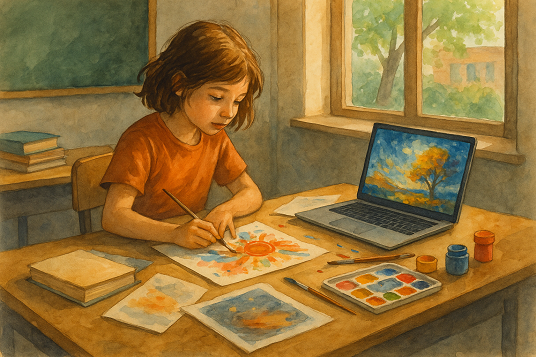
We often talk about how AI is transforming education, but are we talking enough about what it’s quietly taking away?
CREATIVITY
As Sir Ken Robinson often reminded us,“Creativity is as important as literacy.”
And yet, in a system so focused on marks, rubrics, and outcomes,creativity is often the first thing we sacrifice.
Bloom’s Taxonomy places Creating right at the top,but in many classrooms today, it feels like AI has reached that level faster than our students have.While children are still figuring out sentence structure and grammar, AI is already generating poems, paintings, and polished presentations with a single click.
Which brings us to a deeply uncomfortable question:
What happens when AI starts to “create”?
And more importantly—what happens when our students stop?
Today’s AI isn’t truly creative.It mimics. It reuses. It draws from patterns and reproduces what’s already been done.And if we don’t pause now to protect what’s uniquely human,we risk raising a generation of students who know how to use tools,but don’t know how to think.
Everything’s Starting to Look the Same
I’ve seen it. You’ve probably seen it too.
Creative writing tasks that sound strangely uniform.Artwork that feels formulaic.Presentations that are polished, yes, but empty.AI has democratised access to intelligence,but in doing so, it has started to flatten creativity.We’re now at a point where students are outsourcing not just answers,but imagination.
But true creativity cannot be prompted.It’s messy. It’s emotional. It’s born out of thinking, feeling, failing, and trying again. It lives in how we interpret the world. In how we care. In how we connect.
How Can We Bring Creativity Back?
We need to bring back the building blocks of creativity.
READ
Let students read more deeply,not just skim or summarise.Let them feel what’s in the pages, get lost in ideas, debate their favourite character in a book or movie, and form their own emotional connections.
EXPERIENTIAL LEARNING
Let’s re-focus on learning through doing,projects, fieldwork, play, nature, making mistakes, working with hands, collaborating, and reflecting.It’s in these non-linear, real-world experiences that creativity quietly blooms.
FINDING THE PURPOSE
We need to pause and ask: What is this child truly passionate about?
It could be animals, gardening, football, art—anything that sparks joy and curiosity.
Once we discover that passion, we can connect learning to it.
Let’s not just ask what they’re reading, but why they’re reading it.
What inspires them? How can that interest help them solve real-world problems?
That’s when learning becomes meaningful,and creativity starts to flow with purpose.
Because by the time they grow up,the world won’t just need people who can use AI – It will need people who can imagine what AI cannot.
Education
Design and the Future of Learning: How Architecture is Shaping Next-Gen Schools
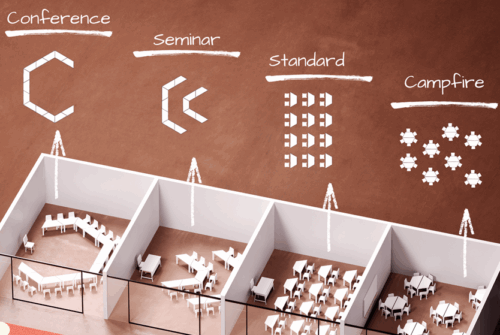
Schools Undergoing Change in India
Schools in India are undergoing a major transformation. Teaching methods are evolving, and schools must meet rising expectations from students, parents, and educators. The National Education Policy (NEP) 2020 has introduced a fresh approach to learning, making it essential for new schools to be designed with these ideas in mind. Older campuses also need thoughtful upgrades and renovations to keep pace.
Schools must adapt to stay relevant in the years ahead. Designing flexible, future-ready spaces is no longer optional, it is vital for creating learning environments that will serve new generations for decades to come.
Experiential Learning
Experiential learning is reshaping education by focusing on hands-on, experience-based learning. It encourages students to take part in activities, real-world problem-solving, and interactive projects that spark curiosity and innovation. Collaboration is central — students work together to tackle challenges, share ideas, and find solutions. This approach deepens understanding and builds teamwork and communication skills needed for future work.
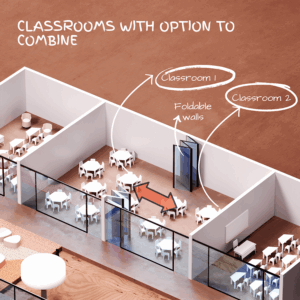
The Importance of Collaboration
Creating spaces that foster experiential learning, enhance engagement, and build critical thinking is essential. Collaborative spaces are a core part of modern school design. They encourage active learning and help students grasp concepts in a deep and meaningful way. By fostering collaboration, schools enable students to develop the skills necessary for success in a rapidly changing world.
Evolving Traditional Classrooms
Traditional classrooms are changing fast. The old rows of desks facing the teacher are giving way to flexible layouts that support different ways of learning. Today’s classrooms can easily switch between standard seating for lectures, conference-style setups for group work, seminar formats for presentations, or campfire circles for open discussions.
Good spatial design plays a big role in building critical thinking and problem-solving skills. A well-designed classroom makes it easy to rearrange furniture for each activity, helping students engage more, think creatively, and learn better together. Studies show students are more motivated and focused in classrooms that adapt to different teaching styles and make learning more interactive.
Spatial Design to Encourage Collaboration
Classrooms with movable furniture allow easy reconfiguration for group work, individual study, or interactive discussions. Flexibility is crucial in modern school design, with modular furniture, movable walls, and multipurpose rooms adapting to different needs. Removing long corridors and creating learning commons with classrooms around them is another innovative approach. Classrooms can open into these commons using sliding or folding partitions, creating a cohesive learning environment. Combining classrooms allows teachers to teach multiple groups together,
building a sense of community.
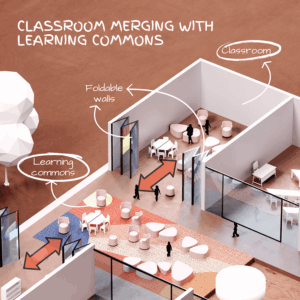
Breakout spaces offer small areas for group discussions, brainstorming, or quiet study, with comfortable seating and whiteboards. Makerspaces equipped with tools and materials foster innovation and hands-on learning by allowing students to apply theory in practice. Outdoor learning areas like gardens or amphitheaters add variety and encourage creativity. Technology-integrated spaces with interactive whiteboards and projectors enhance collaboration by making it easy for students to work together and share ideas. Learning pods provide semi-private spots for group work or individual study. Transparent walls and large windows create openness and bring in natural light, inspiring students to stay engaged.
Designing for well-being & Inclusion
Natural light, vibrant colours, and good acoustics make learning spaces more engaging. Inclusivity is essential so that diverse needs and abilities are accommodated, ensuring all students can succeed. Cross ventilation, thermal comfort, and indoor air quality are equally important — they improve physical comfort and well-being, helping students focus better.
Creativity is also key in effective learning spaces. From preschools to K-12, classrooms should inspire imagination and encourage students to think beyond the ordinary. Thoughtful design elements help create environments where curiosity and innovation thrive.
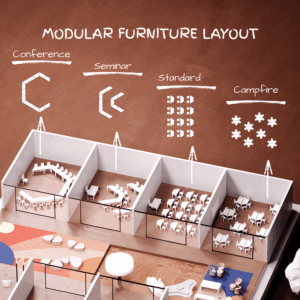
Conclusion
The future of learning will continue to evolve, but well-designed spaces will always play a central role. As educators and designers, we have a unique responsibility to create environments that inspire curiosity, spark ideas, and
support every learner’s journey. By designing schools that are flexible, inclusive, and future-ready, we build not just better classrooms but a stronger foundation for generations to come.
This article is authored by Vinod and Ranju Singhi, the Co-Founders and Principal Architects of BASICS Architects.
Education
How to Win Back Wandering Minds: Post-Summer Edition

The dopamine-rich scrolling in late mornings with amorphous freedom has made our zealous students so comfortable that they are re-entering their classrooms with minds tuned to instant gratification, not delayed rewards. Now the challenge isn’t just academics but to re-engage our bud’s attention and curiosity. Neuroscience backed motivation strategies and intentional school design could prove to be a catalyst as it will bring a positive change and enable the students to learn at a better pace.
1. Rewiring the Dopamine rush with 2 Ps, Purpose and Productivity:
Neuroscience says: Where our brains are functional to seek novelty and purpose on their own, during summer break, the buds often lean into adding the activities to their routine which are unpredictable, quick, and rewarding referring back to instant gratification, these activities may include social media, gaming, and chatting anonymously and grateful to internet and inventions, there are plethora of platforms enabling students to be distracted. And then joining back the school with a gradual drip of delayed academic rewards may seem to be a let-down for students.
Actionable tip: We as facilitators have to be the mystery-solvers channeling their energy into productivity, enlightening them with real-world challenges, interdisciplinary projects, or a mystery to solve that taps into their intrinsic curiosity. Novelty may allow us to reset their attention-even primitive changes in surrounding like rearranged desks, learning outdoors, and using the BALA method to utilize infrastructure, can signal a shift in engagement and productivity.
2. Design for Autonomy and Flow
Neuroscience says:
Neuroscience tells us that motivation really flourishes when students feel they have some control over their learning. The brain’s reward system kicks in when choices are part of the equation, especially regarding how tasks are structured or what content is covered.
Here’s a practical tip: give students structured choices, like deciding which book to dive into, which problem to tackle first, or how they want to present their findings. A design that promotes flow—complete with clear goals, manageable challenges, and instant feedback—helps keep students in that ideal zone, avoiding both boredom and anxiety.
3. Rebuild Social Motivation Through Spaces That Connect
Neuroscience tells us that connecting with peers is a huge motivator, especially after the pandemic. Our brains are wired for social interaction, which plays a key role in how we learn and engage emotionally.
Actionable tip: Create flexible seating arrangements or common areas that encourage group work and casual collaboration. Try incorporating daily activities like “curiosity circles” or peer-led problem-solving sessions to foster a sense of belonging and shared learning objectives.
4. Leverage Routines to Rewire Attention
Neuroscience shows that our habits influence our attention. After a summer of scattered focus, students thrive on rhythmic and consistent routines that help retrain their executive functions.
Actionable tip: Kick off classes with familiar “mind-on” rituals — whether it’s a thought-provoking question, a brief reflection, or a quiet sketch — to help anchor their attention. Consistency breeds comfort, and that comfort boosts confidence.
5. Make Joy a Design Priority
Neuroscience indicates that positive emotions can enhance learning by boosting neuroplasticity. When students (and teachers) experience joy, they’re more likely to engage deeply and retain what they learn.
Actionable tip: Infuse joyful moments into the day — through fun challenges, movement breaks, or a bit of humor. Allow time for students to share what excites them. A joyful classroom isn’t just a nicer place to be; it’s also more effective for learning.
Conclusion: To capture wandering minds, we need to understand how motivation truly works and design both our curriculum and learning spaces to support it. When we ignite curiosity, honor autonomy, and weave joy into the experience, even the sleepiest summer brain can come alive again.
This article is written by:

Renu Sharma
Assistant Director – Systems – Indirapuram Group of Schools
Principal – Indirapuram Public School – Crossings Republik
Education
From Academics to Empathy: Redefining Academic Success
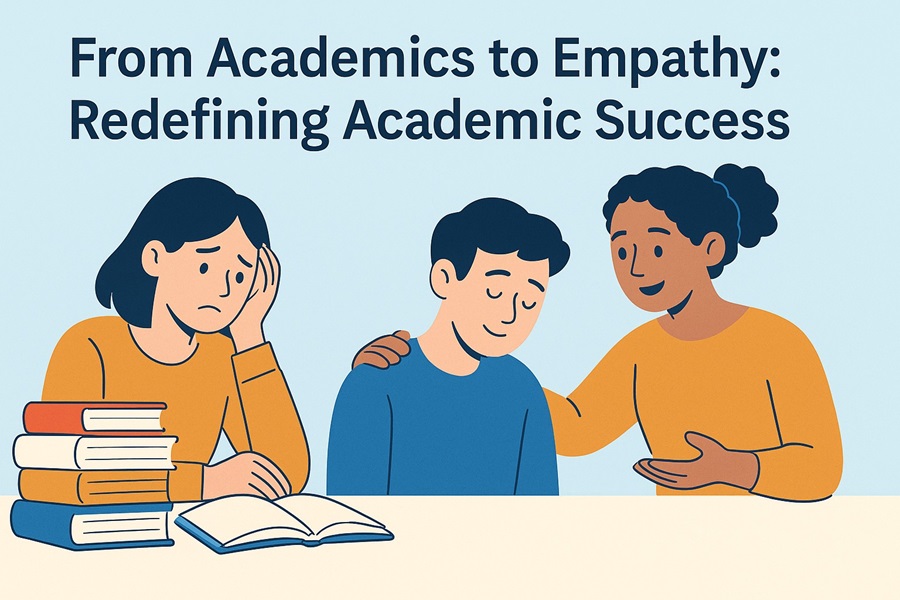
As the world of education evolves, so must our approach to learning. This article explores how empathy, emotional intelligence, and inclusive values must take center stage in 21st-century education, especially within the Cambridge philosophy.
- Moving Beyond Traditional Teaching
The world has shifted from traditional teaching methods to a more humanized approach to imparting knowledge. As educators, we can no longer afford to practice a schooling model that focuses on rote memorisation, academic regurgitation, and a transactional approach to success. The time has come to restructure schools from stressful performance zones to sanctuaries where purpose, empathy, and identity take precedence.
In our ever-evolving world, there is a strong need to overhaul the way education is being imparted. As educators within the Cambridge International community, we understand that now is the time to cultivate learning environments that are havens of purpose, where empathy flourishes, and each student’s unique identity is celebrated.
The Cambridge philosophy, much like India’s National Education Policy (NEP) 2020, encourages us to embrace a well-rounded, interdisciplinary education that instills strong values. This aligns beautifully with global aspirations like the UN’s Sustainable Development Goal 4 (Quality Education) and the growing global emphasis on Social and Emotional Learning (SEL). Our aim as a visionary school extends beyond producing high achievers; we are here to nurture thoughtful individuals, proactive learners, and, most importantly, compassionate human beings.
- The Role of Purpose and Empathy in Learning
And when we talk about empathy, it isn’t just a desirable trait; it’s a cornerstone of transformative education. It fosters a respectful and inclusive classroom, bridging differences and creating a sense of belonging – a principle deeply embedded in the Cambridge approach. Initiatives from organizations like UNESCO, the OECD, and leading universities worldwide highlight the vital role of empathy in learning. Empathetic students become collaborative team players, ethical decision-makers, and engaged global citizens, embodying the Cambridge Learner Attributes.
- Cambridge & NEP 2020: A Shared Vision
In today’s intricate world, I believe that intellectual prowess alone is no longer the sole measure of success. It needs to be nurtured alongside – and often complemented by – emotional and social intelligence. The ability to understand and manage one’s own emotions, navigate social situations with sensitivity, and act with kindness are not just “nice-to-haves”; they are essential skills for thriving in the 21st century and are woven into the fabric of the Cambridge curriculum.
- How IPS Integrates the Cambridge Curriculum
The Cambridge curriculum at Indirapuram Public School, Indirapuram (IPS) is intentionally integrated both vertically and horizontally. As students get older, scaffolded concepts are built upon and nuanced while we work against a compartmentalized view of truth. Students, daily, engage with a host of interconnected ideas across the curriculum to prepare them for the complexity of discourse beyond the walls of our school. Beyond the traditional curriculum, Cambridge endeavors to socially integrate students across grade levels and foster meaningful relationships with their teachers.
As the Cambridge curriculum at IPS evolves, we continue to make it even more responsive to the individual needs of our learners, creating a supportive and welcoming atmosphere. Themes such as values, peace, sustainability, and diversity are integrated across subjects, becoming central threads in our teaching rather than isolated topics. From well-being initiatives to environmental projects like Climate Quest, we are helping the students connect academic learning with real-world empathy and action, especially through engaging, experiential learning.
Leadership within a Cambridge school plays a crucial role in setting this tone. Those who guide our schools shape their very essence, influencing the entire learning community. When leaders model empathy, authenticity, and a clear sense of purpose, our schools become more than just educational institutions; they become nurturing environments where humanity thrives.
“Your children are not your children… They come through you but not from you.”
—Kahlil Gibran
Let us reimagine education—not just as preparation for the future, but as a meaningful and purposeful way of living in the present.
This article is authored by Dr Ashish Mittal
Principal || CBSE & Cambridge Leader
INDIRAPURAM PUBLIC SCHOOL, INDIRAPURAM
Education
History, Identity, and Pride: Books That Make Sense of Being You
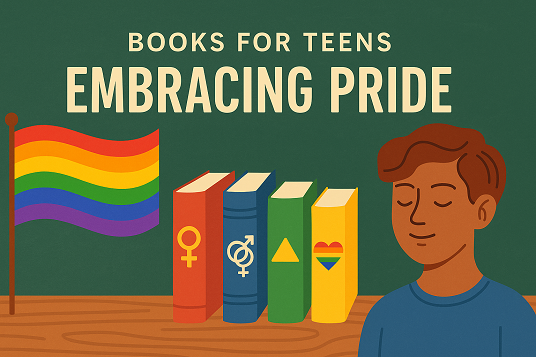
Every June, rainbow flags go up, corporate logos get a splash of colour, and the words Pride Month fill our timelines. But behind this month-long celebration lies something far deeper — an entire universe of history, identity, and stories that often remain outside the margins of our textbooks, especially here in India.
When we talk about queer histories, most people quickly say: Pride is an American concept. And yes, the Stonewall Riots of 1969 are often marked as the start of the modern LGBTQIA+ rights movement. But to believe that queer identities only exist where the parades happen is both lazy and inaccurate. Because if you look carefully — at temple walls, ancient texts, and folklore — you’ll find that India, too, has always had queer stories. We’ve just failed to write them down as part of our “official” history.
Take Mahabharat — where Shikhandi, a warrior born as a woman but raised as a man, plays a crucial role in Bhishma’s death. Or Brihannala, Arjuna’s year-long identity as a eunuch. Look at Khajuraho or Konark temples — where fluid sexual depictions exist without judgement. Even Mughal records speak softly of same-sex companionship. Yet none of these ever made it to our history chapters. Why? Because of historiography — the selective way in which history gets written, where lived experiences are often filtered through political, cultural or moral lenses. What we’re left with is history that’s comfortable — not always complete.
But while adults debate culture wars, there’s a rising generation of Indian teens who are quietly asking braver questions. More kids today — some as young as 12 or 13 — are exploring their gender identities, sexual orientations, or even just the vocabulary to describe what they feel. And many of them don’t know who to turn to. Some are scared of being mocked by peers. Others fear judgement from family. Teachers, too, often don’t have the training or language to guide them. The result? Stories like Aarvey Malhotra’s — a young boy who couldn’t bear the bullying he faced for his gender expression — remind us how deadly this silence can be.

Arvey Malhotra with his mother Aarti Malhotra
So where can these kids turn? Sometimes, the safest place to meet yourself is inside a book.
Here’s a small, carefully chosen list of books (curated with the help of AI) that may help teens (13+) begin that journey of understanding — about themselves or others:
1. Beyond the Gender Binary by Alok Vaid-Menon
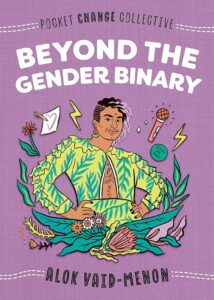
Written by a gender non-conforming writer of Indian origin, this is a short, deeply accessible introduction to gender fluidity.
2. The Boy & The Bindi by Vivek Shraya (Illustrated by Rajni Perera)

While more suitable for slightly younger kids, this beautifully illustrated book helps children embrace non-conformity and Indian culture together.
3. Pride: The Story of Harvey Milk and the Rainbow Flag by Rob Sanders
An excellent way to understand where the modern pride movement began, told through the story of the Pride flag’s creation.
4. Gender Identity: Beyond Pronouns and Bathrooms by Maria Cook
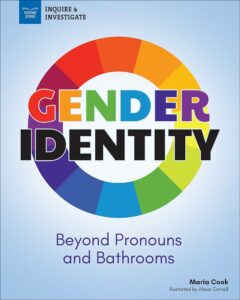
Written for teens, this breaks down gender identity, expression, dysphoria and non-binary identities in simple, compassionate language.
5. The Queer Hindu: A Spiritual Perspective by Devdutt Pattanaik (Selected Essays)
While not strictly a children’s book, certain essays by Pattanaik can open doors for older teens who wish to explore how queerness exists within Indic traditions.
6.Pet by Akwaeke Emezi

A young-adult novel that tackles identity, family, and justice in a tender, imaginative way by a non-binary author.
7. When Aidan Became a Brother by Kyle Lukoff
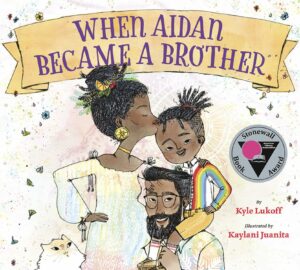
For kids exploring trans experiences, this picture book offers a gentle, positive portrayal of gender transition.
(Book covers- Amazon.in, Goodreads)
So why does Pride matter in schools?
This isn’t about imposing ideologies — it’s about offering answers to kids who are already asking. And if we want fewer kids like Aarvey to feel alone, confused, or ashamed, we need to stop treating gender and sexuality like topics too complicated for them to understand. They’re not. What they need are trusted spaces, the right words, and adults who listen without first judging.
After all, education was always meant to make us more human — and queerness, in all its forms, is part of that humanity.
Edutainment
Of Formulas and Frames: Why India Must Stop Dividing Science and Art
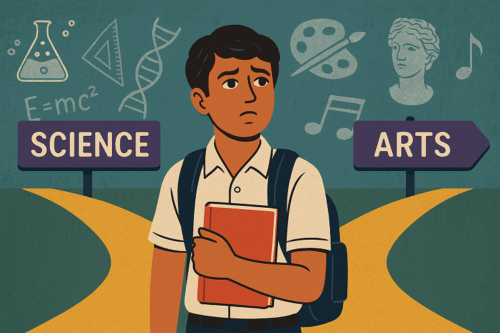
In a recent interview with Lallantop, Varun Grover—acclaimed writer, lyricist, comedian, and filmmaker—hit upon a truth so striking, it should’ve been plastered across school walls: India has lost its plot in nurturing innovators. And the reason? We’ve boxed our subjects—and our students—into separate lanes. Science on one side, art on the other. One wears lab coats, the other paints canvases. They rarely, if ever, meet.
Grover put it sharply: in India, we’ve created a caste-like hierarchy between subjects. Science students often carry the burden of “doing real work,” while arts students claim the higher ground of exploring life and meaning. The result? A deep-rooted disconnect. And it begins early—often in Class 11, when students are forced to pick a stream and silently abandon the rest of their interests.
But must a physicist give up poetry? Must a musician ignore algorithms?
It doesn’t have to be this way. At MIT, one of the world’s top science and tech universities, PhD students in Physics can take courses in music, design, or history—and earn credits for them. Why? Because innovation thrives where disciplines intersect. Because understanding how a flute works can teach you more about frequencies than a textbook diagram ever will.
Consider Steve Jobs, who credited a college calligraphy class for inspiring the Mac’s typography. Or Indian innovator Sonam Wangchuk, whose work in Ladakh seamlessly blends engineering with local art, architecture, and sustainability. His Himalayan Institute of Alternatives (HIAL) teaches future engineers and designers side-by-side, breaking the very silos our system has normalised.
Even Nobel laureate Richard Feynman once said, “I have a friend who’s an artist… He’ll hold up a flower and say, ‘Look how beautiful it is,’ and I’ll agree. But I can also see beauty in how the flower works—its structure, its physics. Science only adds to the beauty.”
And yet, in India, we continue to teach these as separate things. We train students to clear tests, not to create. We push them into IIT-JEE coaching at 13 and expect them to build world-changing ideas at 25.
This isn’t just an academic issue—it’s cultural. Our textbooks rarely reference architecture as both engineering and aesthetic legacy. Our school plays and science exhibitions are held in different corners of the building. Our awards are either for “Best Innovation” or “Best Performance”—never both.
The irony is painful. A land of classical music rooted in maths. A civilisation that built temples with astronomical precision. A country that once integrated dance, sculpture, and geometry with everyday life. And yet, we’ve chosen to modernise by compartmentalising.
It’s time we remember what Varun Grover reminded us of: the pyramid is both an engineering feat and an artistic marvel. And so is the human mind.
Let’s build an education system that stops asking children to choose between knowing and feeling, between numbers and narratives.
Let’s stop making them pick a lane—when the real magic happens at the crossroads.
Education
World Environment Day: Why Your School’s Environmental Education Needs a Cleanup
Education
Curriculum Controversy at Delhi University: Academic Voices Clash Over Syllabus Overhaul

Delhi University’s Executive Council (EC) has approved sweeping curriculum revisions that have sparked sharp protests from faculty members, igniting a fresh debate over academic freedom, ideological influence, and the future of higher education in India. The changes, ratified during the EC’s 1,275th meeting, affect multiple departments including Psychology, Sociology, and English, and introduce new programmes in journalism and nuclear medicine.
Among the most contentious shifts is the removal of conflict-based case studies from the Psychology of Peace paper. Case references to Kashmir, Palestine, India-Pakistan relations, and the Northeast have been replaced with conflict-resolution examples drawn from Indian epics like the Mahabharata and Bhagavad Gita. Similarly, a Sociology paper has dropped foundational thinkers like Karl Marx and Thomas Robert Malthus, along with key sections such as the Sociology of Food and the critical lens on the Sociology of Law.
Faculty members are sounding the alarm. As per a story in Business Standard, EC member and Associate Professor at Kirori Mal College, Rudrashish Chakraborty, called the changes “a complete disregard for disciplinary expertise” and warned they could severely damage DU’s global academic standing.
At the heart of the backlash is a deeper concern about ideological overreach in curriculum design. Critics say the move replaces rigorous, research-based frameworks with selectively religious narratives, undermining the pluralism that once defined Indian academia.
Why These Topics Were in the Curriculum in the First Place
Incorporating geopolitical issues like Kashmir and Palestine in social science syllabi wasn’t about courting controversy—it was about helping students understand conflict, diplomacy, and peace-building through lived realities. Scholars like Marx and Malthus, often labelled as ideologues, contributed frameworks that shaped global discourse on inequality, population, labour, and social justice. To erase them from academic memory is not just selective—it’s intellectually dishonest.
Their inclusion wasn’t about promoting one ideology over another but about exposing students to a spectrum of thought. If academic institutions stop encouraging intellectual plurality, they risk becoming echo chambers that simply mirror prevailing politics.
What Could Have Been Done Differently
If the aim was truly to Indianise or decolonise the curriculum—as has been cited in many recent reforms—it could have been done with scholarly rigour. Including Indian thinkers alongside global ones, offering critical engagement rather than replacement, and developing interdisciplinary modules that draw on Indian social realities would have strengthened rather than diluted the curriculum.
A meaningful curriculum reform should be inclusive, consultative, and pedagogically sound. Instead, these changes appear abrupt and top-down, with several faculty members alleging they were not adequately consulted. As one member remarked, “Modernisation cannot come at the cost of academic autonomy.”
The counter to a whitewashed curriculum should not be to do the exact opposite. Figures like Karl Marx are not just ideologists; their legacies extend beyond nation-states. They presented global ideas that remain relevant to Indian society, especially in an age grappling with inequality and labour rights.
And religion—while an important part of many societies—must never dominate education policy. When one faith is elevated in academic materials meant for students of all backgrounds, it chips away at the secular fabric of our democracy.
Replacing complex geopolitical issues with religious scripture is not only pedagogically flawed—it’s, frankly, a dangerous precedent.
New Programmes and Policy Decisions
Beyond the curriculum overhaul, DU has also announced the launch of a two-year M.A. in Journalism in both Hindi and English, and a BSc in Nuclear Medicine Technology, to be offered at the Army Hospital (R&R) for Armed Forces Medical Services personnel. The EC also introduced a new policy for determining teacher seniority, with age taking precedence over API scores when qualifications are equal.
A committee has been constituted to assess the implications of a DoPT circular mandating periodic review of employees aged 50 and above—raising concerns about forced retirement policies within the university system.
As the NEP rollout moves ahead, universities like DU need to walk the path wisely. Reforms should fuel learning, not push a story. Education isn’t meant to box students into ideologies—it’s meant to open minds, spark debate, and shape citizens who can think for themselves. Our classrooms should dig deeper, not go narrow. We can’t afford to swap knowledge for one-sided thinking.
Education
Kerala Reimagines Schooling: Social Awareness Over Syllabi in Bold New Reforms
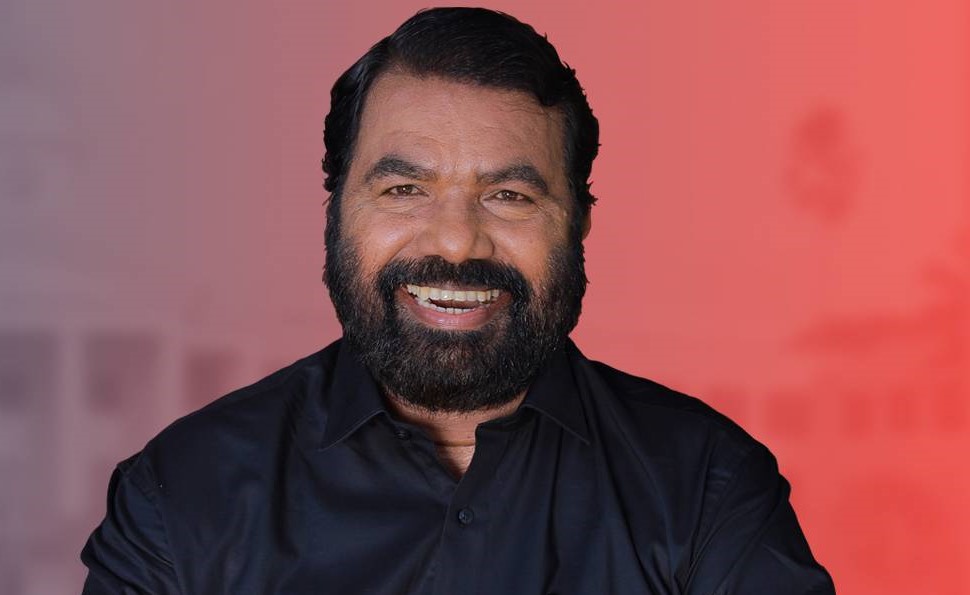
Kerala’s Department of Public Education is steering its schools in a direction few others in the country have ventured. With a growing emphasis on emotional well-being, civic sense, and digital discipline, the state has announced a series of reforms that aim to reframe the purpose and process of schooling in the 2025–26 academic year.
The most striking of these changes is the introduction of a two-week social awareness programme at the beginning of the school year for students from Classes 1 to 10, starting June 2. Higher secondary students will take part in a shorter version of the initiative from July 18. In this period, traditional textbooks will be set aside in favour of sessions that explore topics like drug abuse prevention, responsible social behaviour, emotional regulation, hygiene, gender sensitivity, and legal awareness.
The programme was designed in consultation with experts from the Police Department, Social Justice Ministry, Child Rights Commission, SCERT, and others, ensuring that content is both relevant and age-appropriate. Arts and sports will also be given space during this period, further promoting a holistic approach to education.
In addition to curriculum shifts, the department has issued a directive asking teachers not to create or share reels and videos on social media platforms during school hours. This move comes in light of growing concerns about distractions and the professional image of educators in the digital age.
These reforms reflect a deeper philosophical shift. Education Minister V Sivankutty’s vision seems to be one where schooling is not only about academic advancement but also about nurturing responsible, resilient individuals. While some critics may question the timing or implementation capacity of these reforms, the global education landscape suggests Kerala may be on the right track. Countries like Finland and New Zealand have already incorporated social-emotional learning and life skills into their core curricula, recognising that academic performance alone does not prepare students for an unpredictable world.
Are these reforms necessary? Given rising cases of student stress, substance abuse, and digital addiction, the answer may well be yes. By introducing these changes early in the academic calendar, Kerala is making a case for front-loading empathy, awareness, and life-readiness—concepts that are increasingly critical but often delayed in traditional schooling.
Whether this is a bold experiment or the beginning of a national shift remains to be seen. But there’s little doubt that other states will be watching closely.
Education
Human (Soft) Skills: The Missing Piece in School Curriculums

As the future of work continues to evolve at a breakneck pace, one thing is becoming increasingly clear: the ability to be human is our greatest advantage. In an age where automation and AI are reshaping industries, it’s no longer technical proficiency that sets students apart, it’s human skills.
And yet, our schools aren’t keeping up.
Globally, education systems remain heavily weighted towards academic and technical achievement. While these are certainly important, they no longer tell the whole story. Employers across sectors are united in their call for graduates who can communicate effectively, manage stress, work in diverse teams, and adapt to constant change.
Deloitte’s 2019 report The path to prosperity: Why the future of work is human found that by 2030, two-thirds of all jobs created will be reliant on human capabilities. These include empathy, creativity, collaboration, emotional intelligence, and the ability to learn continuously. All of which are underdeveloped in our current school structures.
This is not a theoretical problem. The impact is already being felt. Research consistently shows that up to 68% of high school students report feeling anxious, underprepared, and lacking the confidence to take the next step into work or further education. The transition from school to career requires more than ‘knowledge acquisition,’ it requires self awareness.
Human skills are the gateway to that self-awareness. They help students identify their strengths, regulate their emotions, communicate effectively, and develop resilience. These are the foundational competencies that allow young people to navigate uncertainty and thrive in a rapidly changing world.
Importantly, these skills are not innate. They are learned, practised, and refined over time — just like maths, science, or coding. When introduced early, human skill development empowers students with confidence and clarity. They learn how to navigate social complexity, resolve conflicts, deal with failure, and see growth as a lifelong journey rather than a fixed destination.
So, why aren’t we teaching these skills in schools as deliberately as we teach literacy or numeracy?
Perhaps it’s because human skills feel harder to measure. But we must shift our mindset. What we value, we measure — and what we measure, we teach. Forward-thinking educators and school leaders across the globe are beginning to incorporate social-emotional learning, strengths-based development, and mental wellbeing into their curriculums, recognising that these are not “nice-to-haves” — they are must-haves.
Imagine a student graduating from high school with not just academic marks, but a toolkit of emotional and interpersonal strengths: an understanding of who they are, what drives them, and how to manage themselves under pressure. Imagine a generation that sees learning as a lifelong pursuit and failure as a stepping stone rather than a setback.
This is the future we must design for.
It starts by giving human skills a seat at the table – not as a supplement to education, but as a core component of it. We need to empower educators with the tools and frameworks to deliver this kind of learning and where necessary provide expert facilitators to avoid adding more to the workload of educators. We need to engage students in real, reflective experiences that help them connect their inner world with the outer demands of life and work.
The most meaningful educational innovation doesn’t just teach students to do more. It teaches them to be more – to be self-aware, to be empathetic, to be adaptable. That’s how we create work-ready individuals and life-ready citizens.
The world doesn’t need more rote learners. It needs more critical thinkers, resilient leaders, and emotionally intelligent problem solvers. And the time to cultivate them is now – in our classrooms, through our curriculums, and with intention.
This article is authored by Renata Sguario
Renata Sguario is the founder and CEO of Maxme and the current chairman of the board of Future First Technology (formerly known as PS+C Limited), listed on the ASX (FFT), one of Australia’s leading end-to-end ICT and digital consulting organisations.
-

 Education2 months ago
Education2 months agoCBSE’s ‘Sugar Boards’ Initiative: Tackling the Sweet Crisis in Indian Schools
-
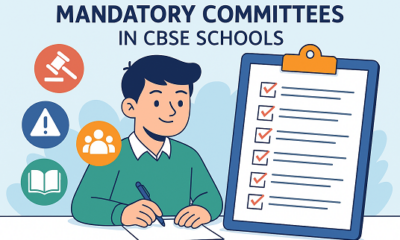
 Education3 months ago
Education3 months agoIs Your School Following These Mandatory CBSE Committees?
-
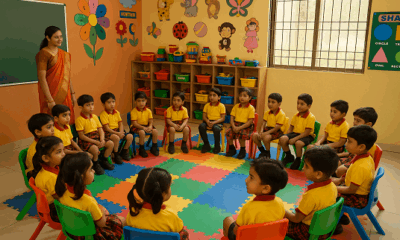
 Education3 months ago
Education3 months agoMaharashtra to Regulate Pre-Primary Education with New Law Aligned to NEP 2020
-

 Education3 months ago
Education3 months agoMAHAJYOTI’s Book Distribution Scheme to Empower 7,000 OBC Students Preparing for JEE/NEET & MHT-CET
-
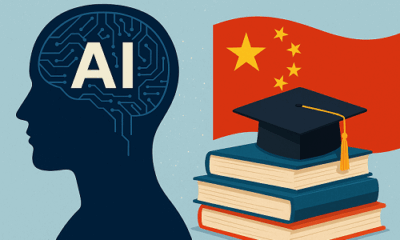
 Education3 months ago
Education3 months agoChina Embarks on Ambitious AI-Driven Education Reform to Build a ‘Strong Education Nation’ by 2035
-

 Education3 months ago
Education3 months agoCBSE Introduces Mandatory Bridge Course for Classes 6 to 12 in Chhattisgarh Under NEP 2020
-
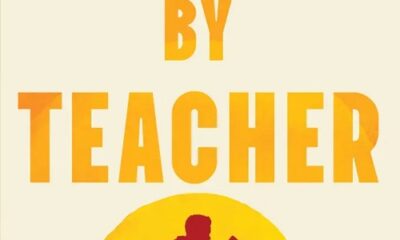
 Education2 months ago
Education2 months agoJohn King’s Book ‘Teacher By Teacher’: A Global Tribute to the Transformative Power of Education
-

 Education3 months ago
Education3 months agoRewriting Ambedkar: Why Students Must Know the Man Beyond the Constitution
-

 Education3 months ago
Education3 months agoCBSE Mandates 50-Hour Annual Training for Teachers, Declares STEM as 2025 Theme
-
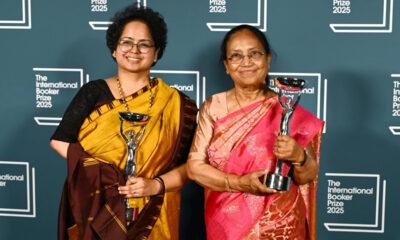
 Education2 months ago
Education2 months agoBanu Mushtaq’s International Booker Win Is a Wake-Up Call for Indian Schools to Reclaim Literature












